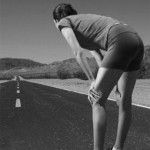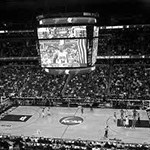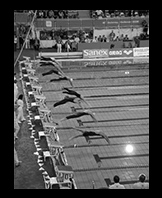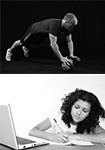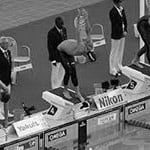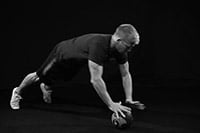Massage therapy is the manipulation of the body’s soft tissue and has many benefits for athletes and non-athletes alike. When used correctly, this mechanical pressure can help improve performance, accelerate recovery, and increase overall well-being. In this post, I will explore the benefits that massage can yield and quickly outline different types of therapy.
Read MoreThroughout my collegiate swim career my coaches and trainers would often bring up the concept of “Lactate Threshold”. I would nod my head having an idea of what they were referring to, but didn’t fully understand the physiology behind this concept. After taking an Exercise Physiology class my 5th year at UC Berkeley, I finally understood this principle and learned its importance in elite level athletics. This post will explain what Lactate Threshold (LT) is and how you can use it to your advantage in training.
Read More
March truly is a crazy month. The nation is a buzz with even the president filling out his own bracket. I am going to be highlighting areas such as post-competition recovery and best practices for travel. These areas are especially important during March Madness, where the teams that can best adapt are generally the teams that find themselves in the winner's circle. I have chosen a few exercises that can help athletes with this quick competition turnaround. The first is the Lying Abduction / Adduction, a contrasting movement warmup exercise. The main exercise for today is the body-weight band squat, excellent for developing quick hip speed. To recover from today's workout, I have chosen the Scorpion stretch, a great way to release tension in your hips.
Bridge coaches and athletes, it is truly great to have you back. March is one of my favorite months of the year, due to the excitement and passion that surrounds NCAA Swimming + Diving Championships and March Madness. In today's video, I have chosen to include a series of exercises designed to help prepare you for peak performance and to assist in battling through the taper blues. First is the TRX Balance Lunge. I have chosen this single-leg stability exercise as the warmup for today's workout. The plyometric exercise, the Dumbbell Jump Shrug, is a great loaded triple-extension exercise for all level athletes. The recovery exercise for today is the pigeon stretch. This movement will help you properly recover from the legwork and increase flexibility around the hip capsule.
Read MoreMost people know that working out is a great way to stay fit, healthy and happy. Additionally, and lesser known, physical activity helps increase cognition. When you exercise your heart- you exercise your brain! Previous studies involving exercise and cognition were focused on decreasing the risk of dementia in the elderly. However, with new technological advances, there is more research showing the cognitive benefits of exercise at all ages. In this post, we will explore these new advances and how they translate to the positive influence on cognition and brainpower.
Read MoreThroughout the collegiate championship series, we will highlight some key training elements that can help you perform at your best. In this episode, I have chosen to highlight three exercises. The first is the Superman Level 2 - a great scapula, shoulder and back maintenance exercise and one that also prepares you for explosive movements such as today's Incline 3-Way Clap Pushup. This is a great to add during your championship phase. The Seated Hamstring on Hamstring is the final exercise. It is a very useful recovery exercise to use post-travel and post-competition. See you back here next week, Bridge fans.
Read More
It's great to have you back, Bridge coaches and athletes. It is going to be tough to follow up the 2014 Sochi Olympics, but fortunately, we have plenty of championship events in the near future. To lead off, we have the NCAA Swimming and Diving Championships, featuring some of the best international aquatic stars. I truly believe that athletes hone themselves both athletically and personally at the collegiate level, and I am looking forward to seeing these athletes perform the their highest levels. I hope that you enjoy this time of the year as much as I do. Stay tuned in the weeks to come as I will focus on exercises to include during your championship phase.
Read MoreWith the 2014 Sochi Winter Olympics around the corner, it is a great time to discuss training at altitude and its impact on competitions. Athletes who participate in Winter Olympic events must train and compete where the total air pressure is much lower and there are fewer oxygen molecules present. For athletes to perform successfully with less oxygen in every breath, they must spend an extended period of time at altitude while their bodies make physiological adaptations to the environment.
Read MoreBridge coaches and athletes, following is the final video in our Speed and Recovery Series. For this week's episode, we will preview the Medball Ballistic Pushup and the 3-Way Shoulder Stretch Series. The MB Ballistic Pushup may seem to be an upper-body exercise, but I classify it as a full-body plyometric exercise. It will help increase upper-body power, while strengthening the mid-section and lower back. It is a complete fingertips-to-toes movement. To relieve pressure placed on the shoulder joints and scapula, I have chosen to focus on the 3-Way Shoulder Stretch Series. This series will help the muscles used in the previous ballistic movement to recover for the next bout of speed work.
Read More

